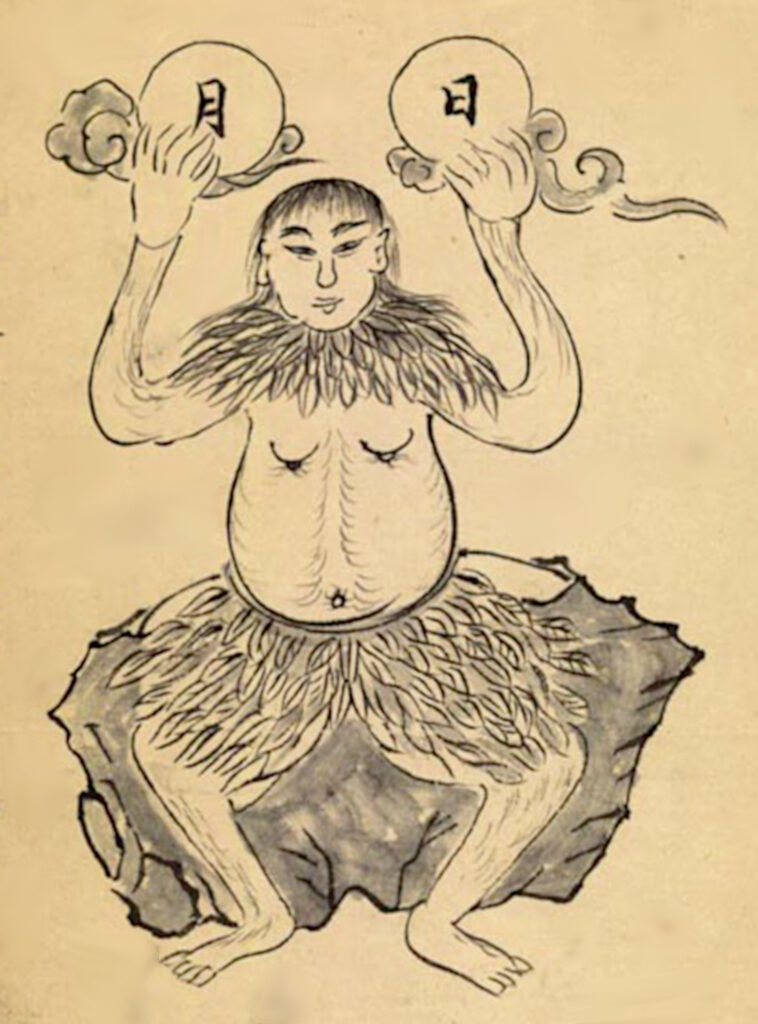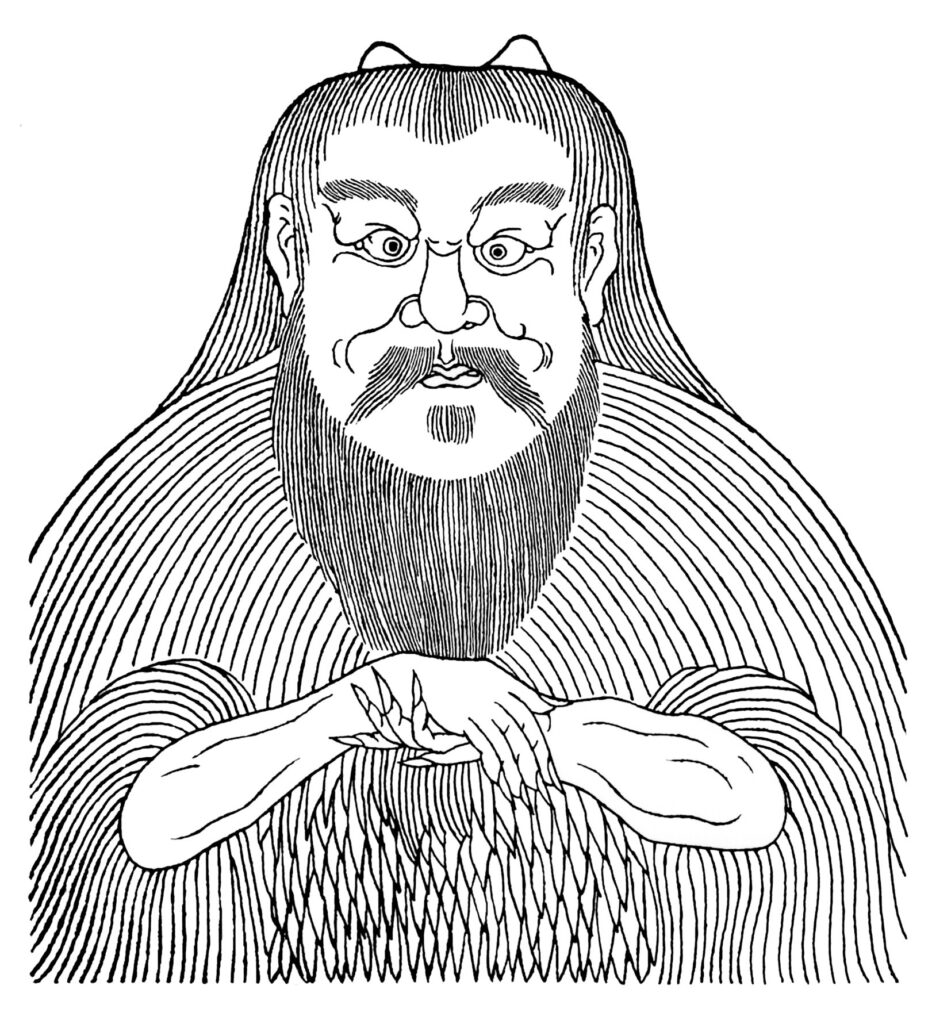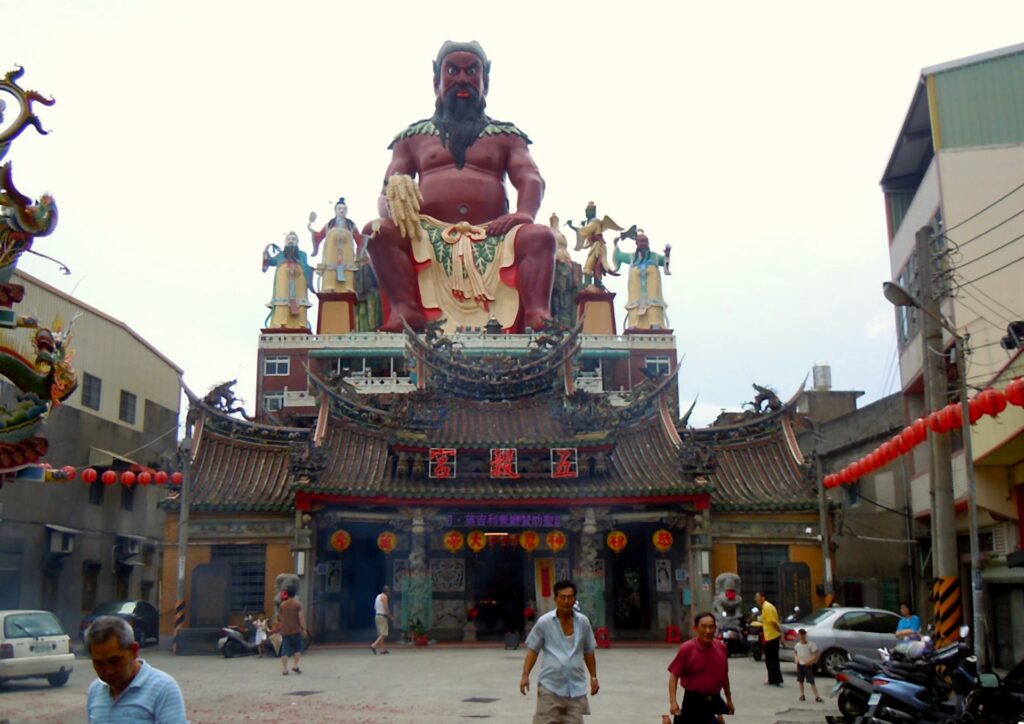I’ve been searching online for depictions of Pangu, a creator deity in Chinese folk religion. So far, I’ve found lots of video game and anime and cartoon depictions of Pangu, which appear to be more or less commercial, and generally from an outsider perspective. But I’ve found few depictions done by religio-cultural insiders. This is probably in part because I’m searching for Pangu using English, and Anglophones don’t appear to be very interested in deities from Chinese folk religion.
But I have found a few interesting depictions of Pangu. Like this sketch in a Chinese manuscript dated c. 1900, currently in the collection of the Library of Congress:

Then there’s this depiction of Pangu. Note the horns on his head.

(I had to do a lot of digital repair to the image above; the scan that’s widely available online was apparently made from a poorly done print. I tried to remain as true to the original as I could, but this is really a recreation rather than a direct copy of the original.)
Finally, here’s my favorite depiction of Pangu. Like the previous depiction, he has horns on his head, a beard, and a sort of shoulder cape made of leaves (?).

There’s another depiction of Pangu, plus a retelling of a creation story featuring him, over at my curriculum site.
I still have not idea of what Pangu worship looks like, or what it involves. Chinese folk religion is one of those religions where Westerners have a real blind spot. Which makes it hard to find out much of anything about Pangu.
